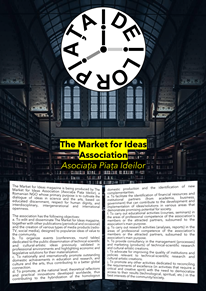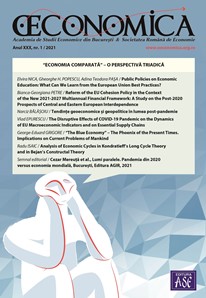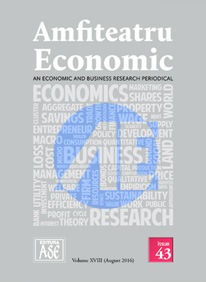
Romania: The Highest Shares of Children in Poverty or Social Exclusion in the EU
Among the EU Member States in 2021, the highest shares of children at risk of poverty or social exclusion were recorded in Romania, according to Eurostat data. The percentage of 41.5% was well above those for Spain (33.4%) and Bulgaria (33.0%). On the other hand, the lowest shares were reported in Slovenia (11.0%), Finland (13.2%) and Czech Republic (13.3%).
Children who grow up in poverty or social exclusion encounter difficulties in doing well in school, enjoying good health and realising their full potential later in life. They also face a higher risk of becoming unemployed, poor and socially excluded as adults.

In 2021, 24.4% of children (aged less than 18 years old) in the EU were at risk of poverty or social exclusion compared with 21.1% of adults (aged 18 and over). Children were at a higher risk of poverty or social exclusion compared to adults in 18 out of the 27 EU Member States. The largest gaps between the two age groups were recorded in Luxembourg (10.5 percentage points; pp), Romania (8.7 pp), Spain and Austria (both 6.8 pp).
On the contrary, adults were at a higher risk of poverty or social exclusion compared to children in 9 Member States (Latvia, Estonia, Denmark, Croatia, Slovenia, Lithuania, the Netherlands, Finland and Poland). The largest gaps between the two age groups among these nine countries were observed in Latvia (7.4 pp), Estonia (6.0 pp) and Denmark (4.0 pp).
- 24.4% of children in the EU were at risk of poverty or social exclusion in 2021 compared to 21.1 % of adults.
- In 2021, dependent children living with a single adult recorded the highest risk of poverty or social exclusion in the EU (44.1%).
- In 2021, 62.5% of children in the EU whose parents attained a lower secondary education level were at risk of poverty or social exclusion compared to 9.8% of children whose parents attained a tertiary education level.

In context, the evidence shows that, in our country, the main factor of risk is the level of education attained by the parents. Although we have the highest proportion of kids at risk when the parents have at most lower secondary education, above 80% along with Czech Republic and Bulgaria, that is not case when the parents reach third level education (ISCED 5-8).
Surprisingly, Romania goes in that case from top to bottom in terms of risk for the children, all the way up to the third best place. With a percentage of only 5.9% for age class 0-17 years, it is placed right after Czech Republic (4.5%) and Croatia (5.4%) and much better than the EU average of 9.8%.
Methodological note:
Educational attainment level is classified according to ISCED — the international standard classification of education. The (latest) 2011 version has the following levels:
ISCED level 0 — early childhood education;
ISCED level 1 — primary education;
ISCED level 2 — lower secondary education;
ISCED level 3 — (upper) secondary education;
ISCED level 4 — post-secondary non-tertiary education;
ISCED level 5 — short-cycle tertiary education;
ISCED level 6 — bachelor’s or equivalent level;
ISCED level 7 — master’s or equivalent level;
ISCED level 8 — doctoral or equivalent level.
At risk of poverty or social exclusion, abbreviated as AROPE, corresponds to the sum of persons who are either at risk of poverty, or severely materially and socially deprived or living in a household with a very low work intensity. People are included only once even if they are in more than one of the situations mentioned above. The AROPE rate is the share of the total population which is at risk of poverty or social exclusion. It is the main indicator to monitor the EU 2030 target on poverty and social exclusion.
The risk of poverty or social exclusion is not dependent strictly on a household’s level of income, as it may also reflect joblessness, low work intensity, working status, or a range of other socio-economic characteristics. To calculate the number or share of people who are at risk of poverty or social exclusion, three separate measures are combined and this covers those persons who are in at least one of these three situations: persons who are at risk of poverty, in other words, with an equivalised disposable income that is below the at-risk-of-poverty threshold; persons who suffer from severe material and social deprivation, in other words, those who cannot afford at least seven out of thirteen deprivation items (six related to the individual and seven related to the household) that are considered by most people to be desirable or even necessary to lead an adequate quality of life; persons (aged less than 65 years) living in a household with very low work intensity, in other words, those living in households where adults worked equal to or less than 20 % of their total combined work-time potential during the previous twelve months.
Photo source: PxHere.








